1. Lopez Bernal J, Andrews N, Gower C, Gallagher E, Simmons R, Thelwall S, et al. Effectiveness of Covid-19 vaccines against the B. 1.617. 2 (Delta) variant. N Engl J Med. 2021; 385(7):585–594. PMID:
34289274.
2. Klein NP, Lewis N, Goddard K, Fireman B, Zerbo O, Hanson KE, et al. Surveillance for adverse events after COVID-19 mRNA vaccination. JAMA. 2021; 326(14):1390–1399. PMID:
34477808.
5. Polack FP, Thomas SJ, Kitchin N, Absalon J, Gurtman A, Lockhart S, et al. Safety and efficacy of the BNT162b2 mRNA Covid-19 vaccine. N Engl J Med. 2020; 383(27):2603–2615. PMID:
33301246.
6. Baden LR, El Sahly HM, Essink B, Kotloff K, Frey S, Novak R, et al. Efficacy and safety of the mRNA-1273 SARS-CoV-2 vaccine. N Engl J Med. 2021; 384(5):403–416. PMID:
33378609.
7. Østergaard SD, Schmidt M, Horváth-Puhó E, Thomsen RW, Sørensen HT. Thromboembolism and the Oxford-AstraZeneca COVID-19 vaccine: side-effect or coincidence? Lancet. 2021; 397(10283):1441–1443. PMID:
33798498.
8. Huh K, Na Y, Kim YE, Radnaabaatar M, Peck KR, Jung J. Predicted and observed incidence of thromboembolic events among Koreans vaccinated with ChAdOx1 nCoV-19 vaccine. J Korean Med Sci. 2021; 36(27):e197. PMID:
34254476.
10. Wise J. Covid-19: how AstraZeneca lost the vaccine PR war. BMJ. 2021; 373(921):n921. PMID:
33853827.
11. Dyer O. Covid-19: EMA defends AstraZeneca vaccine as Germany and Canada halt rollouts. BMJ. 2021; 373(883):n883. PMID:
33795216.
12. Lee E, Lee YK, Kim TE, Hwang I, Jung YH, Lee HR, et al. Reports of anaphylaxis after coronavirus disease 2019 vaccination, South Korea, 26 February to 30 April 2021. Euro Surveill. 2021; 26(33):2100694. PMID:
34414880.
13. MacNeil JR, Su JR, Broder KR, Guh AY, Gargano JW, Wallace M, et al. Updated recommendations from the advisory committee on immunization practices for use of the Janssen (Johnson & Johnson) COVID-19 vaccine after reports of thrombosis with thrombocytopenia syndrome among vaccine recipients - United States, April 2021. MMWR Morb Mortal Wkly Rep. 2021; 70(17):651–656. PMID:
33914723.
14. Gargano JW, Wallace M, Hadler SC, Langley G, Su JR, Oster ME, et al. Use of mRNA COVID-19 vaccine after reports of myocarditis among vaccine recipients: update from the advisory committee on immunization practices - United States, June 2021. MMWR Morb Mortal Wkly Rep. 2021; 70(27):977–982. PMID:
34237049.
15. Bozkurt B, Kamat I, Hotez PJ. Myocarditis with COVID-19 mRNA vaccines. Circulation. 2021; 144(6):471–484. PMID:
34281357.
17. Pullan S, Dey M. Vaccine hesitancy and anti-vaccination in the time of COVID-19: a Google Trends analysis. Vaccine. 2021; 39(14):1877–1881. PMID:
33715904.
18. Anderson ML. Subways, strikes, and slowdowns: the impacts of public transit on traffic congestion. Am Econ Rev. 2014; 104(9):2763–2796.
19. Bakolis I, Stewart R, Baldwin D, Beenstock J, Bibby P, Broadbent M, et al. Changes in daily mental health service use and mortality at the commencement and lifting of COVID-19 ‘lockdown’ policy in 10 UK sites: a regression discontinuity in time design. BMJ Open. 2021; 11(5):e049721.
20. Calonico S, Cattaneo MD, Titiunik R. Robust nonparametric confidence intervals for regression-discontinuity designs. Econometrica. 2014; 82(6):2295–2326.
21. Park YS. Thrombosis and severe acute respiratory syndrome coronavirus 2 vaccines: vaccine-induced immune thrombotic thrombocytopenia. Clin Exp Pediatr. 2021; 64(8):400–405. PMID:
34237213.
22. Shay DK, Shimabukuro TT, DeStefano F. Myocarditis occurring after immunization with mRNA-based COVID-19 vaccines. JAMA Cardiol. 2021; 6(10):1115–1117. PMID:
34185047.
24. Bian L, Gao Q, Gao F, Wang Q, He Q, Wu X, et al. Impact of the Delta variant on vaccine efficacy and response strategies. Expert Rev Vaccines. 2021; 20(10):1201–1209. PMID:
34488546.
25. Karron RA, Key NS, Sharfstein JM. Assessing a rare and serious adverse event following administration of the Ad26.COV2.S vaccine. JAMA. 2021; 325(24):2445–2447. PMID:
33929484.
26. Torjesen I. Covid-19 vaccine shortages: what is the cause and what are the implications? BMJ. 2021; 372(781):n781. PMID:
33741547.
28. Mathieu E, Ritchie H, Rodés-Guirao L, Appel C, Giattino C, Hasell J, et al. Coronavirus Pandemic (COVID-19). Updated 2020. Accessed October 5, 2021.
https://ourworldindata.org/coronavirus
.

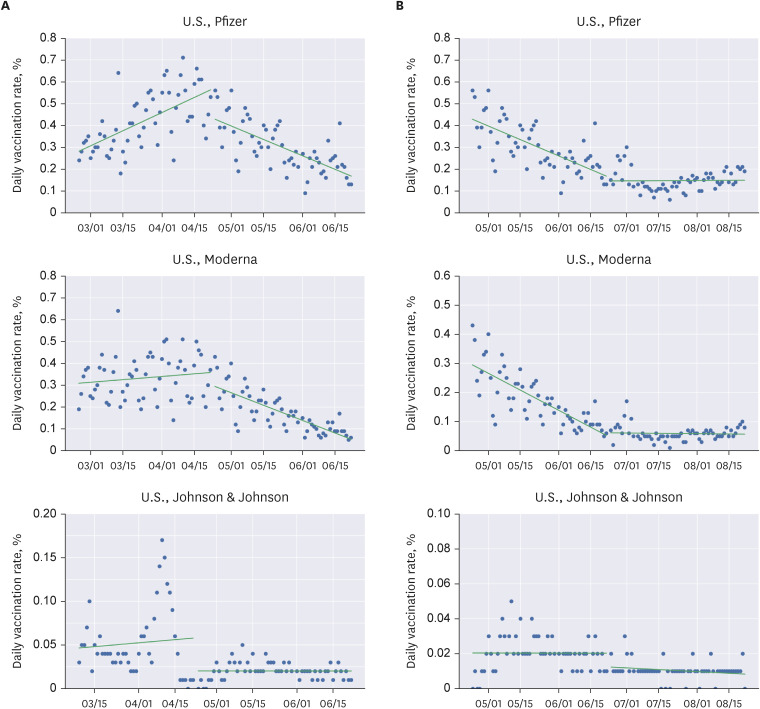
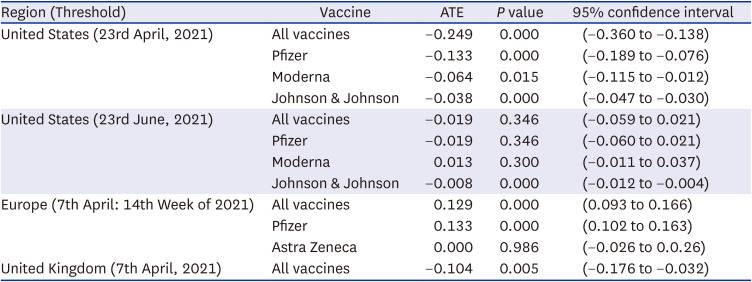
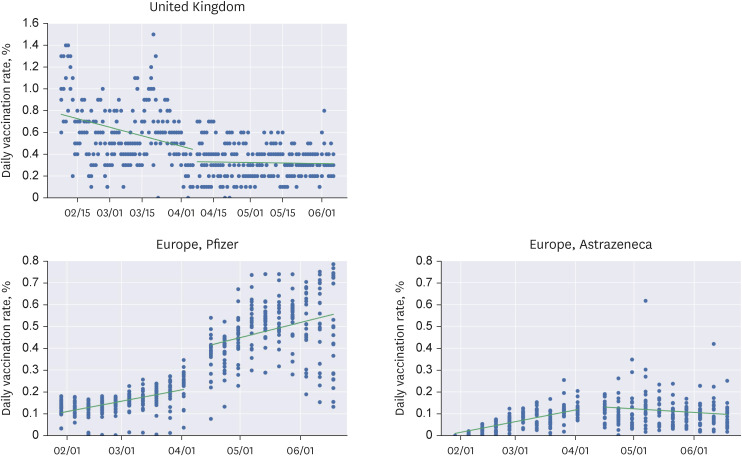





 PDF
PDF Citation
Citation Print
Print



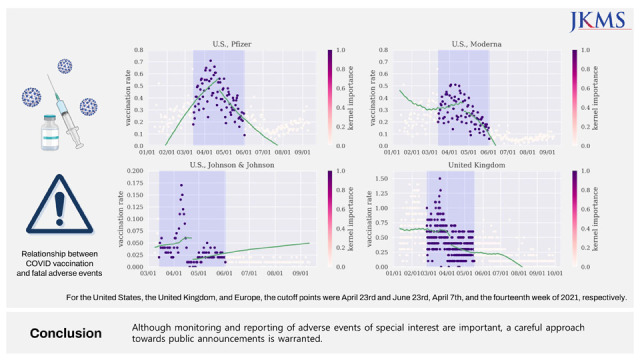
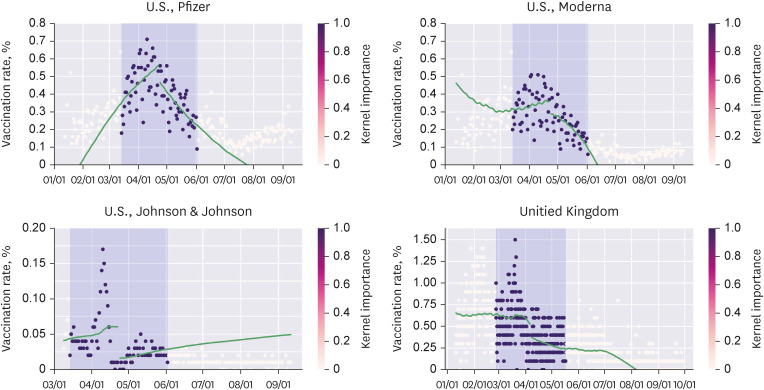
 XML Download
XML Download